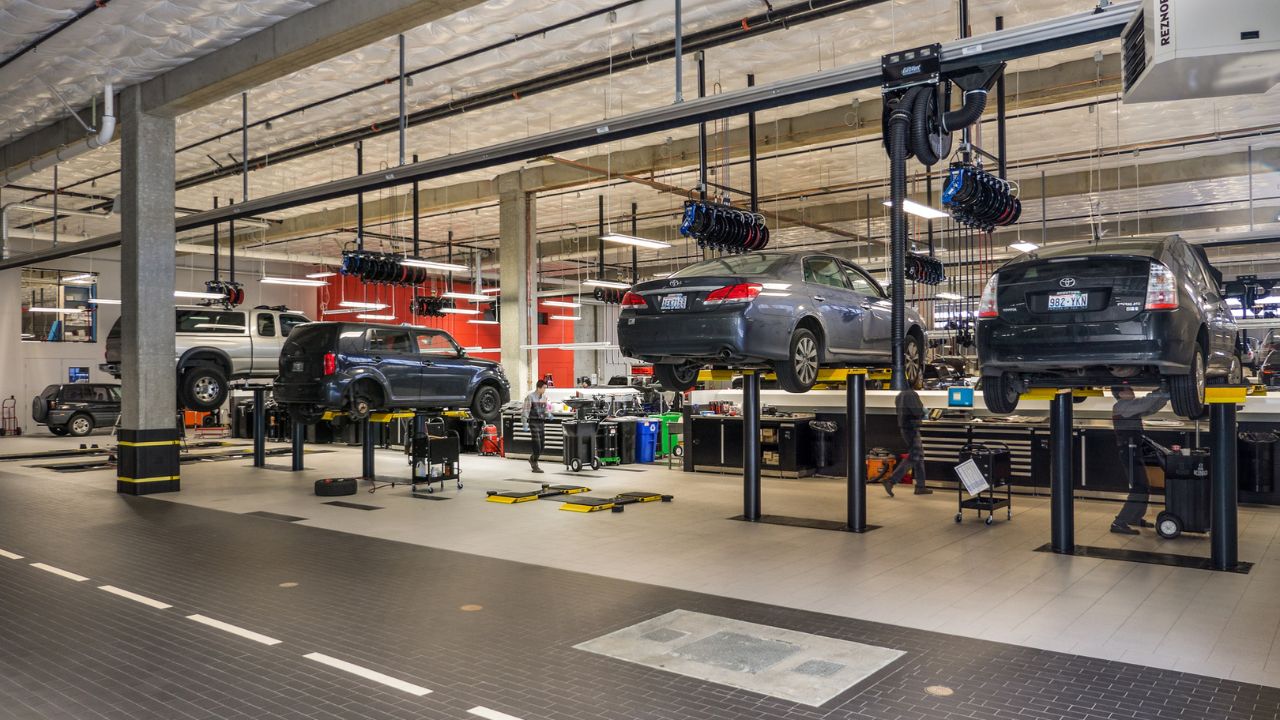Over the last few years, I have read countless articles and posts on social media about the shortage of technicians in the available workforce or labor pool as a whole.
There is a shortage of technicians as a result of four major issues:
- Compensation & Flat Rate
- Working Conditions in the Shop
- Lack of Professional Development
- No Respect
Problem #1: Compensation & Flat Rate
Technician compensation is something that has to be addressed before the shortage becomes a crisis. As someone who is generally a fan of flat rate, due to the ever-decreasing book time warranty pays from the OEM and the increasing timelines of service intervals, I would argue we are nearing the point that the flat rate model is outdated and needs to be abandoned. The hourly model with a production-based incentive is a much more effective and attractive model to adopt. This provides a level of financial stability for the technicians while still allowing the techs to earn additional money with the increased levels of productivity.
For those of you who have never been a flat rate technician, one thing you must consider is that technicians spend a significant sum of money on tools to effectively perform their jobs. Few other professions require the employee to spend the kind of money a good technician must spend. Most technicians are dropping $50 to $100 a week with their local Snap-on or Matco dealer. Look at the comparison on the variable side of the business. How many of your salespeople are spending money out of their own pocket for leads or marketing materials? An hourly or salary pay plan with production incentives allows them to better manage their own financial situation and gives them an extra layer of security.
In terms of cost and profitability, let’s compare the flat rate model to the hourly plus incentive model. When looking at this from a cost basis, the hourly technicians’ wages are generally fixed over the course of an eight-hour workday, for example, whereas the flat rate technicians’ cost is variable based entirely on production. As productivity increases for the flat rate technician, the associated labor cost increases as well. The hourly technician will have the same cost (or relatively the same cost depending upon incentive plans) even with an increase in production. With the hourly model, as productivity rises, the margin rises along with it. On the flat rate model, as productivity rises, the margin actually stays fixed. If you have a highly productive shop, you would actually have a better bottom line margin with an hourly pay plan with some production-based incentive.
Problem #2: Working Conditions in the Shop
While OEM automotive dealers have mostly figured this one out, dealers in the equipment, power sports, and independent shops have seriously neglected technicians’ working conditions. I walk in service departments all the time and sometimes it feels like stepping through a time machine back to the 1970s. Shops are poorly lit, completely unorganized and chaotic, no workflow or processes, floors covered in everything you can imagine, and technicians walking around in the same blue with light blue pinstripe work shirts from 1975. Think about a kid in college or a trade school: How many of them have hopes and dreams of one day landing a dream job in the dungeon of some dirty, aging building?
Take this one step further. If technicians aren’t attracted to that shop, what makes you think your customers are? The presentation of your dealership does not stop where the service department begins. I would suspect that all of my friends who are general managers and dealer principals would never consider selling their house with a meticulously cleaned and organized living room, and then a kitchen with months old dishes piled up and old food stuck to the countertops.
Here is a challenge I have put to many dealers over the years. I would come in and take about 30-50 pictures of the dealership service department and ask the dealer principal which of those pictures he would like to put his name and logo on and use for advertising. As you can imagine, the thought process changes quickly. The moral of the story, if it’s not presentable to customers, it is also unacceptable for your employees.
Problem #3: Lack of Professional Development
The vast majority of new and seasoned technicians see little to no future opportunity for advancement beyond a service writer or service manager position. Even technicians who make it to a writer or manager position, they rarely receive the training, coaching, and feedback to become effective at those roles. Over 90% of the service managers I have worked with over the years were completely unprepared for that position when they were promoted from technician.
The service department is a very complex business when you actually examine the financial aspect and the proper metrics that need to be examined, not to mention the day-to-day management of the operations. Most service managers measure certain metrics, but are completely blind to others. They make decisions based on opinion rather than actionable, measurable data. Most have never been taught how to analyze the relationship between multiple data points beyond just efficiency and productivity. You or your service manager should be able to analyze, understand, and explain all 28 metrics of service department performance. I am shocked at how many do not even monitor their effective labor rate or parts to labor ratios. Majority of dealer principals and general managers come from the sales side of the business and do not have a firm grasp on the complexity of service profitability. This makes for difficult onboarding of new service managers. You have to know your numbers.
To take this one step further, how many of you that are proficient on the business side of service actually take the time to train your technicians on this subject? Do your technicians understand exactly how their role contributes to the profitability of the department? This is a key thing to teach technicians as it allows the technicians to better understand the decisions you make and how those decisions affect the department. This also allows technicians the knowledge of how training, workflow, process improvement, and such can ultimately make them more productive and earn more money. More importantly, the better informed and developed your technicians are, the better your service department will perform.
You all have a lot of talent in your service department. Take the time to comprise a development plan for each member of your team. You might find a great salesperson, parts manager, F&I, or even a potential general manager back there someday. Just because they sell labor as opposed to new retail units does not mean they do not possess the talent to become rockstars in other roles or departments.
Problem #4: No Respect
I may hurt some feelings with this one, but here we go anyway. How many of you general managers and dealer principals have taken technicians out to lunch, or invited them to go golfing, or given them tickets to a baseball game, or went to one of their kids’ birthday parties? For those of you that have and do this regularly, I applaud you. I can tell you from my time in the shop and what I see every day is that most technicians feel completely invisible to management and the front end of the business. In fact, WrenchWay found that 42% of technicians do not even feel valued and respected by management.
Have you ever really thought about why there is always so much contention between sales and service? One is treated like gold and the other is basically ignored until there is a problem. We can basically sum the first three problems I discussed in this article up in the respect column.
Dealership culture has contributed to this. While sales is held in such high regard, we often see service as a necessary evil within the dealership. A top salesperson will get perks, recognition, golf days with the owner, and so on, while your top technician will rarely get as much as a “good job” from their own manager.
This culture needs to change if you want to retain technicians and attract new ones. How does a technician’s performance compare to a salesperson’s performance? For example, a technician operating at 100% productivity (hours billed vs hours worked) will contribute approximately $14k-$16k in parts and labor gross profit each month. In annual terms, you are looking at approximately $168k-$192k per year. This is the equivalent of a salesperson averaging about 120 retails in a year at a PRU of $1,450. Once again, that same salesperson did not have to spend thousands on tools or pay back a student loan for a trade school they had to attend just to get an entry-level job in the dealership.
In short, consider this, if you were coming out of high school and deciding on a career, how would you feel about this job description for a career path?
Become a technician! You can expect a rewarding career in which you will work long hours, but may or may not get paid for all of them). You will work in a state-of-the-art facility built in 1925 with three inches of oil dry on the floor in an area in which everything is dirty and you cannot find anything you are looking for and may get hurt tripping on something looking for the thing you will never find.
The general public will assume you are a crook trying to fix things that don’t need to be fixed just to get more money from the customer. Your manager will second-guess everything you diagnose and repair. You will receive factory training each year so you can try to better recoup some of the hours you don’t get paid for on flat rate.
You will eat or starve based on which service writer you get (and you better hope you get one that can actually sell or you’ll never make money). The rest of the dealership will ignore you, never consider you for promotion, and rarely even acknowledge your existence. You will bust your fingers, knuckles, head, develop back problems, and more!
Almost forgot, and you need to spend about $60,000 dollars on your own tools! Good Luck!
Now, I know that is a little extreme, but unfortunately, that is the perception.
Want to Solve the Shortage? Change the Perception and Culture!
So why do you think we are having a technician shortage and good techs are becoming more and more difficult to find? We have to work to change the perception of the technician career and we need to modernize in actuality as well. It is our own fault as an industry that we have not addressed this problem already. If we want to change this trajectory, we better change our culture and we better do it right quick.
The most important asset in your business is your employees. Every single one of them. I do not care if it is the lot boy or the sales manager. They all have talent and all have potential. It is your job as managers to figure that out and then put together a plan to develop them. Invest in your people.
In business, the customer is number two, right behind the employee. If you do not take care of your employees, you won’t have to worry long about customers because you will not have any. If you take great care of your employees, they will take great care of your customers and your business will prosper.
About the Author
Josh Laurent
Managing Partner, Country Classic Cars – Lean Six Sigma Green Belt
Follow Josh on LinkedIn
Josh began his career as a flat-rate technician for a large Mercedes Benz dealerships. He has worked with over 75 different dealerships over his career in the automotive, motorcycle, and equipment sectors of service and fixed operations. Josh has been fortunate to witness this problem through the lens of a technician, a service writer, a service manager, a district service manager, and a fixed operations consultant. The problems are the same in almost every dealership he’s worked with or consulted for.
Editor’s Note: Last updated July 2024. This article was originally published in November 2021 and has been revamped and updated for accuracy and comprehension.






